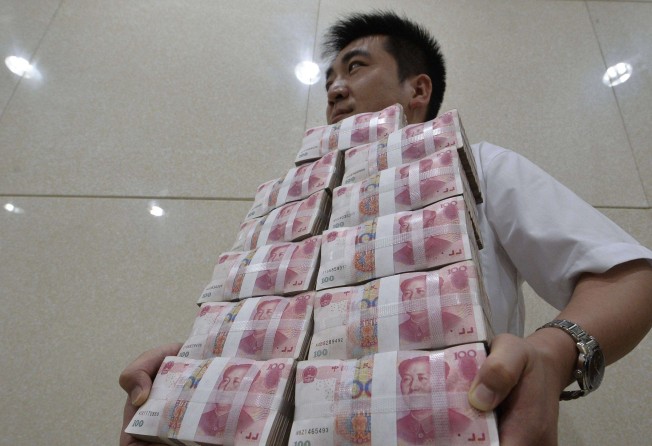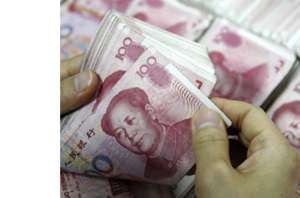China’s banks face highest level of bad loans since 2004
PBOC advisor tells Beijing forum that NPL ratio is ‘being underestimated’, and urges government to push forward sector reform

Banks in China are facing their highest level of bad loans since 2004, and the situation is unlikely to improve short term, a senior official with China’s top banking regulator said on Thursday.
Outstanding non-performing loans (NPLs) across the banking sector exceeded two trillion yuan by the end of May, up by 280 billion yuan, or 14 per cent from the beginning of this year, Yu Xuejun, chairman of the Board of Supervisors for major state-owned financial institutions, under the China Banking Regulatory Commission (CBRC) told an industry forum in Beijing.
The NPL ratio of Chinese banks, meanwhile, climbed to 2.15 per cent of total bank lending, up 0.16 percentage point from the beginning of 2016.
By the end of the first quarter, the CBRC measured the NPL ratio at 1.75 per cent, the highest rating since 2009.
Loans that are overdue for more than 90 days are also on the rise, Yu said, putting added pressure on the banks’ risk control systems, debt provisions and profits.
“The most important reason (for the rise in bad loans) is the continued economic slowdown,” Yu said, adding he expected bad-debt risk to continue rising in the near term.
“Some commercial bank governors share the hope that the Chinese economy will improve and alleviate the NPL pressure — but in fact, that’s impossible short term.”
He urging lenders to be vigilant of risks triggered by asset bubbles, especially those related to local governments.
Economic growth in China slowed to a 25-year low last year, pushing more bad assets onto banks’ balance sheets.
Economists are expecting the economy to lose further momentum after the second quarter, as the effects of stimulus measures used by the central government start to taper off.
Huang Yiping, an advisor to the People’s Bank of China (PBOC), and also a professor with Tsinghua University, told the same forum that he thinks the banks’ NPL ratio is actually “being underestimated”, and that the Chinese government should push forward reform to stem the rising risks to the sector.

But he also noted the dilemma China’s policy makers were facing, that rising bankruptcies and the resultants layoffs would push the risk higher.
“As China continues its attempts to avoid the middle-income trap, by finding substitute industries, it faces a great conflict.
“Some factories will have to be closed down, people will lose their jobs, and some debts will become sour,” he said.
Concerns about a major crisis in China’s banking sector are growing.
Nine of 15 respondents in a Bloomberg survey conducted at the end of June predicted a government-funded recapitalisation will take place within two years.